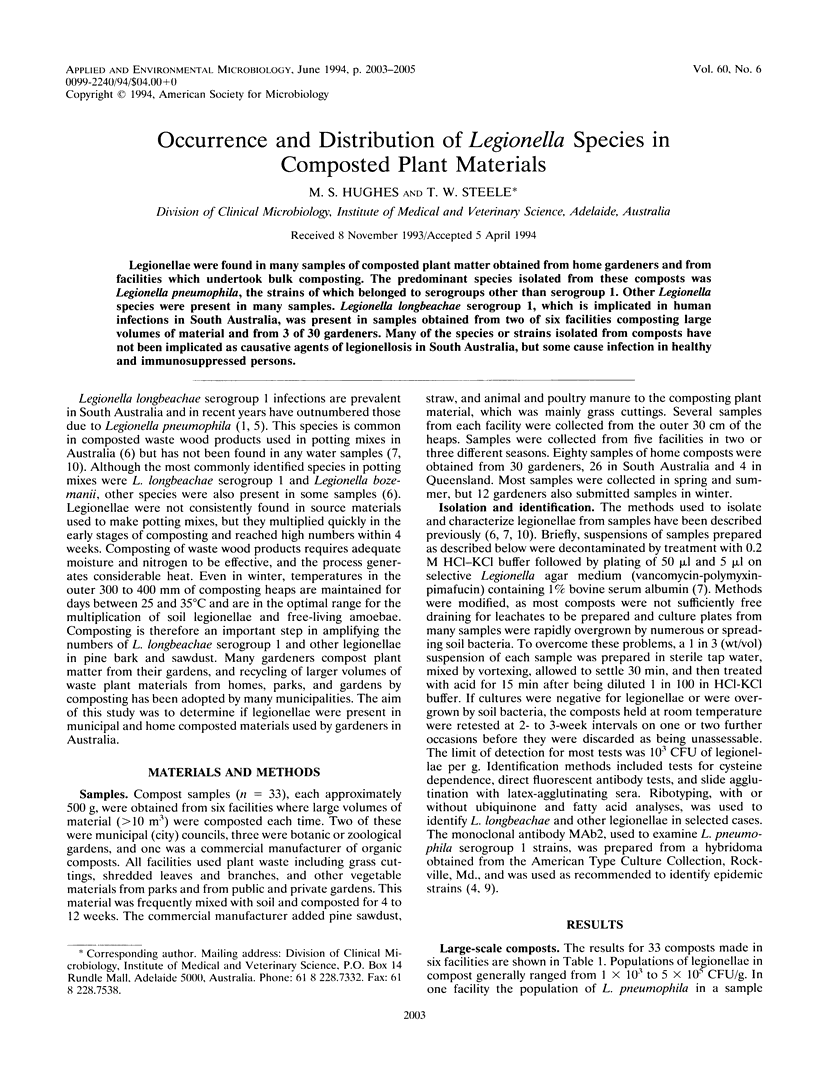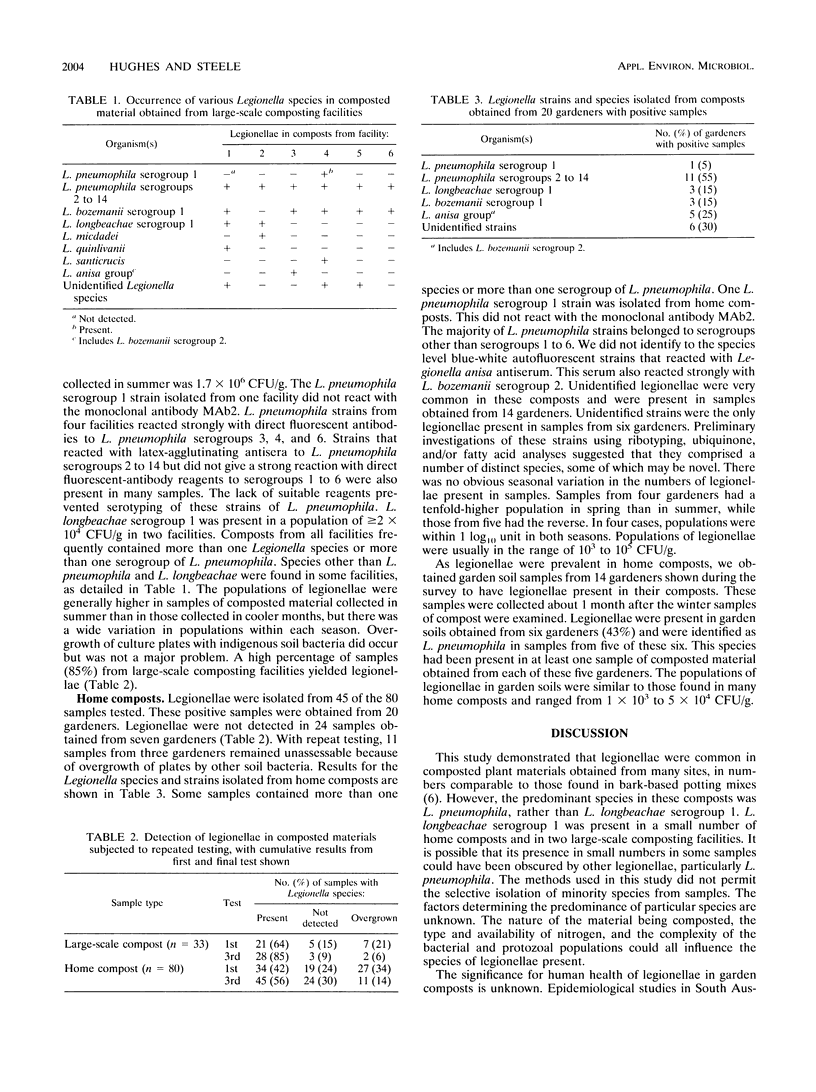Abstract
Legionellae were found in many samples of composted plant matter obtained from home gardeners and from facilities which undertook bulk composting. The predominant species isolated from these composts was Legionella pneumophila, the strains of which belonged to serogroups other than serogroup 1. Other Legionella species were present in many samples. Legionella longbeachae serogroup 1, which is implicated in human infections in South Australia, was present in samples obtained from two of six facilities composting large volumes of material and from 3 of 30 gardeners. Many of the species or strains isolated from composts have not been implicated as causative agents of legionellosis in South Austrailia, but some cause infection in healthy and immunosuppressed persons.
Full text
PDF


Selected References
These references are in PubMed. This may not be the complete list of references from this article.
- Cameron S., Roder D., Walker C., Feldheim J. Epidemiological characteristics of Legionella infection in South Australia: implications for disease control. Aust N Z J Med. 1991 Feb;21(1):65–70. doi: 10.1111/j.1445-5994.1991.tb03007.x. [DOI] [PubMed] [Google Scholar]
- Fang G. D., Yu V. L., Vickers R. M. Disease due to the Legionellaceae (other than Legionella pneumophila). Historical, microbiological, clinical, and epidemiological review. Medicine (Baltimore) 1989 Mar;68(2):116–132. doi: 10.1097/00005792-198903000-00005. [DOI] [PubMed] [Google Scholar]
- Joly J. R., McKinney R. M., Tobin J. O., Bibb W. F., Watkins I. D., Ramsay D. Development of a standardized subgrouping scheme for Legionella pneumophila serogroup 1 using monoclonal antibodies. J Clin Microbiol. 1986 Apr;23(4):768–771. doi: 10.1128/jcm.23.4.768-771.1986. [DOI] [PMC free article] [PubMed] [Google Scholar]
- Steele T. W., Lanser J., Sangster N. Isolation of Legionella longbeachae serogroup 1 from potting mixes. Appl Environ Microbiol. 1990 Jan;56(1):49–53. doi: 10.1128/aem.56.1.49-53.1990. [DOI] [PMC free article] [PubMed] [Google Scholar]
- Steele T. W. Legionnaires' disease in South Australia, 1979-1988. Med J Aust. 1989 Sep 18;151(6):322, 325-6, 328. doi: 10.5694/j.1326-5377.1989.tb128470.x. [DOI] [PubMed] [Google Scholar]
- Steele T. W., Moore C. V., Sangster N. Distribution of Legionella longbeachae serogroup 1 and other legionellae in potting soils in Australia. Appl Environ Microbiol. 1990 Oct;56(10):2984–2988. doi: 10.1128/aem.56.10.2984-2988.1990. [DOI] [PMC free article] [PubMed] [Google Scholar]
- Thacker S. B., Bennett J. V., Tsai T. F., Fraser D. W., McDade J. E., Shepard C. C., Williams K. H., Jr, Stuart W. H., Dull H. B., Eickhoff T. C. An outbreak in 1965 of severe respiratory illness caused by the Legionnaires' disease bacterium. J Infect Dis. 1978 Oct;138(4):512–519. doi: 10.1093/infdis/138.4.512. [DOI] [PubMed] [Google Scholar]
- Watkins I. D., Tobin J. O., Dennis P. J., Brown W., Newnham R., Kurtz J. B. Legionella pneumophila serogroup 1 subgrouping by monoclonal antibodies--an epidemiological tool. J Hyg (Lond) 1985 Oct;95(2):211–216. doi: 10.1017/s0022172400062641. [DOI] [PMC free article] [PubMed] [Google Scholar]
- Wilkinson I. J., Sangster N., Ratcliff R. M., Mugg P. A., Davos D. E., Lanser J. A. Problems associated with identification of Legionella species from the environment and isolation of six possible new species. Appl Environ Microbiol. 1990 Mar;56(3):796–802. doi: 10.1128/aem.56.3.796-802.1990. [DOI] [PMC free article] [PubMed] [Google Scholar]


